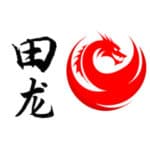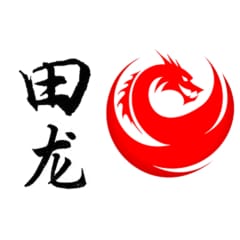Inventory Accounting
If you are running an e-commerce or retail business, inventory can be one of the largest assets that you own. It also requires professional judgment, time, and effort by the accountant to properly value the inventory. In most cases, a flaw in inventory accounting represents the difference between the reporting of profits and losses for a business.
In this article, I will introduce the concept of inventory, the types of accounting activities that relate to it, and how the accounting for inventory can vary, depending upon the complexity of the underlying systems.
The Definition of Inventory
Some examples of inventory include raw materials, work-in-process, finished goods, and merchandise that a business has on its premises or out on consignment at any given time. These components of inventory are defined as follows:
Raw materials
This is the source material for a company’s manufacturing process. It can literally be “raw” materials that require a major transformation to become a product, such as an iron sheet.
Work-in-process
This is raw materials that are in the process of being transformed into finished products through a manufacturing process. This can be quite a small amount if the manufacturing process is short, or a massive amount if the item being created requires months of work, such as an airplane.
Finished goods
These are products that have successfully completed the manufacturing process, and which are ready for sale.
Merchandise
These are finished goods that have been purchased from a supplier, and which are ready for immediate resale. Examples of merchandise are clothes sold at a retailer or tires sold at a local automobile repair shop.
Inventories do not include consumables or supplies, which are charged to expense in the profit and loss statement. Also, customer-owned inventory is not recorded as inventory by the company. Further, supplier-owned inventory located on the premises is also not recorded as inventory.
Inventory can be in three places, which are:
In company storage
By far the most common. This is inventory kept in any location that is under the direct control of the business. This may be anywhere at a company facility, in trailers in the company parking lot, in leased warehouse space, and so forth.
In transit
A business technically takes ownership of inventory depending on the delivery terms (also known as incoterm) from the supplier. This means that ownership can be passed on to the buyer as soon as the goods leave the shipping dock of the supplier, upon leaving the warehouse, or upon receiving up to the buyer’s warehouse.
One example of such incoterm, a business will own the inventory until it reaches the customer’s receiving dock if it is shipped under FOB destination terms.
On consignment
A company may retain ownership of inventory at a retailer or distributor location, with its ownership interest continuing until such time as the inventory is sold. This inventory is much more difficult to track since it is off-site.
Accounting for Inventory
There is a considerable amount of work for accounting inventory. It is necessary to first determine the correct unit counts comprising ending inventory, and then assign an appropriate value to those units. Overhead costs are also added to the inventory valuation. These actions are needed to record an ending inventory value as well as to calculate the cost of goods sold for the reporting period.
Let’s expand upon these basic issues in the following points.
Determine ending unit counts
A company may use either a periodic or perpetual inventory system to maintain its inventory records. A periodic system relies upon a physical count to determine the ending inventory balance, while a perpetual system uses constant updates of the inventory records to arrive at the same goal.
Improve record accuracy
If a company uses the perpetual inventory system to arrive at ending inventory balances, the accuracy of the transactions is paramount.
Conduct physical counts
If a company uses the periodic inventory system to create ending inventory balances, the physical count must be conducted correctly. This involves the completion of a specific series of activities to improve the odds of counting all inventory items.
Estimate ending inventory
There may be situations where it is not possible to conduct a physical count to arrive at the ending inventory balance. If so, the gross profit method or the retail inventory method can be used to derive an approximate ending balance.
Assign costs to inventory
The main role of the accountant on a monthly basis is assigning costs to the ending inventory unit counts. There are a number of methods for doing so. The basic concept of costing, which involves tracking tranches of inventory costs, is the first-in, first-out (FIFO) layering system, the last-in, first-out (LIFO) system (FRS 2 explicitly prohibits LIFO used in Singapore), and weighted average cost formula. There are several related approaches to how historical costs can be assigned to units as they move into and out of inventory. A different approach includes Standard Costing of Inventory, which describes the assignment of a standard cost to each inventory item, rather than a historical cost. In addition, we make note of two alternative ways to aggregate costs; job costing is used to compile costs for small production runs or unique products. Process costing is used to compile costs for large production runs of identical products.
In addition, it may be necessary to write down the inventory values for obsolete inventory, or for spoilage or scrap, or because the market value of some goods has declined below their cost.
Clearly, there are many functions related to inventory that the accountant must be either directly involved in or at least have some knowledge of.
Inventory Transactions
There are numerous places in the flow of inventory through a company that may call for the recordation of formal inventory transactions. The most basic areas in which the accountant will be involved are:
Receiving
When raw materials or merchandise is received from a supplier, the receiving department forwards receiving documentation to the accounts payable department. The payables staff records these receipts once it also receives an invoice from the supplier, as well as a confirming purchase order from the purchasing department (also known as three-way matching).
Shipping
When goods are shipped to a customer, the shipping department forwards a copy of the daily shipping log to the billing department. The billing staff records a sale transaction from the log and the related sales order. Depending on the accounting system, the cost of the goods may also be charged to the cost of goods sold expense at this point.
Period-end adjustments
At the end of each reporting period, the accountant adjusts the recorded ending inventory valuation to match the actual inventory valuation (typically using standard costs) and applies factory overhead to the goods produced during the period. Some of this allocated overhead will end up being charged to the cost of goods sold and some will appear in ending inventory, depending upon the extent to which the produced goods were sold during the period. The derivation of costs for work-in-process inventory includes capitalized labor costs, depending on their stage of completion. Lastly, capitalized labor costs are included in the valuation of finished goods.
The three transactions discussed above present the absolute minimum level of accounting needed for inventory.
To make it more fine-grained level of inventory accounting, the following additional areas can be considered:
Write-offs
It may be necessary to write down the value of inventory for spoilage, scrap, rework, obsolescence, or lower of cost or market adjustments. All these activities are encompassed by the period-end adjustments noted, but there is no segregation of each type of cost. At a more advanced level, the accountant can identify each type of write down and record it in a separate account, which can be used by management to investigate the underlying causes of these expenses.
Reserves
A more refined form of accounting for write-offs is to create reserves for these items based on estimates of probable losses, and then write off the reserves as actual losses are encountered.
Classifications
If there is a need to report inventory by classification, the ending inventory count must be segregated into raw materials, work-in-process, and finished goods inventory, with cost assignments to each classification for capitalized labor and overhead costs.
Costing
The accuracy of inventory costs can be increased by using a costing methodology, such as the FIFO or weighted average methods. Doing so requires the tracking of costs incurred to obtain each inventory item, and the order in which these costs are charged to the cost of goods sold. Note that under FRS 2, LIFO methods are explicitly prohibited in Singapore.
Perpetual inventory adjustments
If a company is using a perpetual inventory system, separate entries are made to document the flow of goods through the various inventory classifications, as well as any write-offs of inventory.
The volume of accounting transactions is quite low when just the most basic inventory events are being recorded. However, as the system becomes more sophisticated, the number of accounting events skyrockets. The volume level of transactions is especially high when there is a perpetual inventory system and adjustments to this system are rolled forward into the accounting system.
Summary
The overwhelming topics related to inventory should make it clear that the accountant must be deeply concerned with the accuracy of the inventory asset. There are many ways in which inventory can be incorrectly recorded or subsequently modified, as well as ways in which the asset value can be fraudulently altered. In the following chapters, we show how these concerns can be mitigated by installing a robust system of counting, valuation, controls, and measurements.


